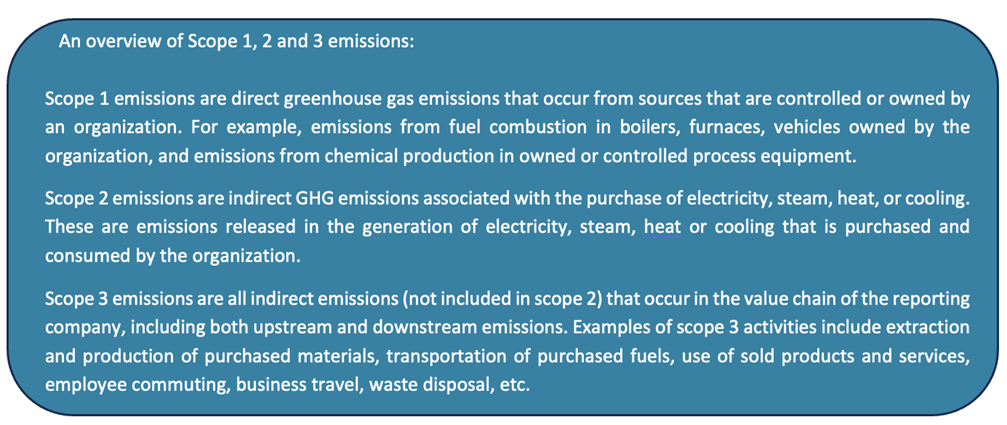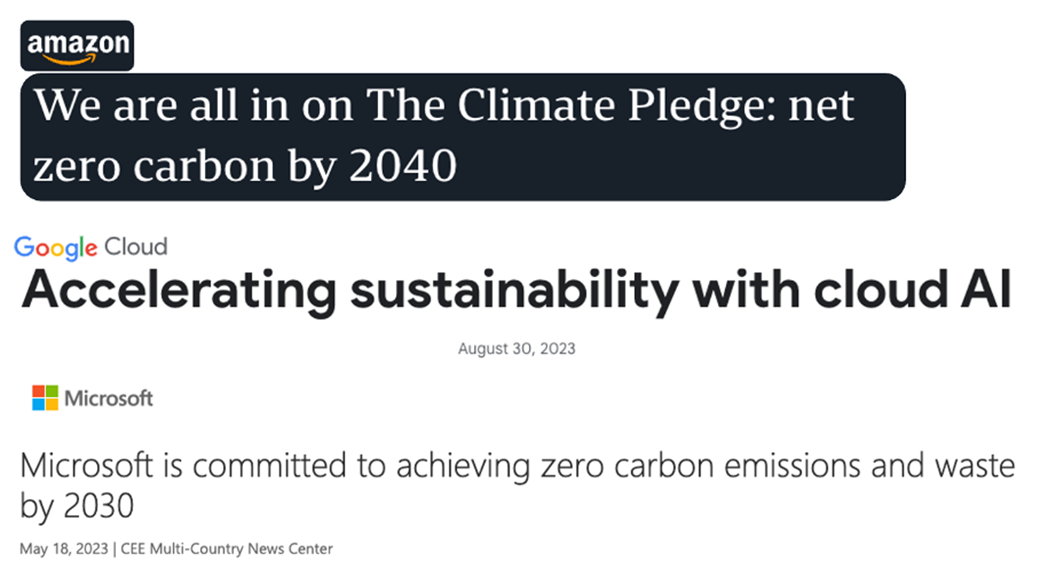Siddy holds a Master’s degree in Economics from the University of Antwerp and a Master's degree in Financial Management from the Vlerick Business School. Passionate by innovation and entrepreneurship, he also participated to an Executive Master in Venture Capital at the Berkeley Haas School of Business. Prior to joining Econopolis, he managed the Investor Relations & Treasury office at Orange Belgium, a telecom company. Siddy also held the position of Telecom, Media & Technology analyst at a large Belgian Asset Management firm. Further, he is also active in the advisory board of StartupVillage and The Beacon, a business and innovation hub in the center of Antwerp focused on Internet of Things and Artificial Intelligence in the domains of industry, logistics and smart city. At Econopolis, he is Portfolio Manager of the Econopolis Exponential Technologies Fund.
How AI's exponential growth aligns with sustainability and net-zero goals
Earlier this week, I had the pleasure of delivering a presentation on exponential technologies at the beautiful C-Mine site in Belgian Limburg. This place was once synonymous with coal mining. After the discovery of coal in the Limburg Kempen in 1901, several industrial groups applied for mining concessions, and eight were granted. On March 31, 1988, the coal mine closed permanently. On the mine site, several buildings still stand, reflecting its mining history, including both the oldest and the most recently constructed headframes in Limburg. After its closure, the municipality of Genk has completely repurposed the coal site with the C-Mine project, focusing on the creative economy and education. The cultural center and the MAD art school have found a home there, along with a cinema, businesses, workshops, and restaurants. Against this backdrop, I gave a presentation on how the world is digitizing and how artificial intelligence will play a crucial role in this transformation in the coming years. Afterwards, I received an insightful question from a passionate attendee who was interested in the sustainability aspects of artificial intelligence and big tech companies, particularly the energy consumption used to power the data centers that drive ChatGPT and other generative AI applications. It's an entirely valid question and an excellent topic for our in-depth analysis this week.
Digitalization's dual edge: societal benefits and environmental responsibility
At the foundation of the AI ecosystem lie the computer chips that drive the computation, connectivity, and storage of data centers. These centers power the cloud and AI models behind applications like ChatGPT and other generative AI tools. These applications, in turn, produce more data, necessitating even more computational power. In finance, this principle is celebrated as compounded returns. However, in the realm of computing, it raises the question: How will we sustainably power this ever-increasing data processing?
Before delving into this issue, it's crucial to underscore the profound benefits digitalization has brought to society. It has made significant strides in diverse domains, from healthcare and agriculture to energy supply, innovation, and beyond. It's likely fair to say that the positive impacts brought about by digitalization alone can counterbalance any potential negative effects. Nevertheless, this doesn't absolve digital entities from their moral responsibility to contribute positively to the world, especially when it comes to something measurable as their CO2 emission footprint.
To effectively investigate the CO2 emissions of data centers powering AI models, we would like to refer to the Greenhouse Gas Protocol Corporate Standard. This standard offers clear definitions and guidelines for classifying both direct and indirect emissions under Scopes 1, 2, and 3. Furthermore, the Greenhouse Gas Protocol stands as the premier international benchmark for quantifying and reporting greenhouse gas emissions. Thus, this seems the optimal approach to examining the sustainability facets of artificial intelligence and major tech corporations, and to provide our passionate attendee with an adequate answer.

Scope 1 emission output remains well in check
Scope 1 emissions from big tech companies are comparatively minor, especially when compared with their Scope 3 emissions. Scope 1 emissions encompass those from diesel fuel combustion and fugitive emissions arising from refrigerant use in data center cooling. These emissions are the most straightforward for big tech companies to manage since they directly result from their operations. By nature, tech companies are predominantly digital and electrified, and so their scope 1 emission output remains well in check.



Scope 2 emissions and the green initiatives of tech giants
Scope 2 emissions are indirect emissions that arise from procuring energy from external sources. For major tech companies, these emissions predominantly stem from the electricity consumed by data centers. These data centers serve as the foundational infrastructure in our rapidly digitizing world. So, let’s have a look at CO2-emissions related to the basic infrastructure of the AI-ecosystem.
According to the International Energy Agency (IEA) the global data center electricity consumption in 2022 was 240-340 TWh1, or around 1-1.3% of global final electricity demand. This excludes energy used for cryptocurrency mining, accounting for 0.4% of annual global electricity demand. Given that we want to consume data, anywhere, any place and anytime these datacenters also need to be connected with data transmission networks (mobile and fixed networks), their energy consumption could also be accounted for. The IEA estimates this at 260-360 TWh in 2022, or 1-1.5% of global electricity use. These data centers and transmission networks are linked to power plants through the electricity grid. These plants generate electricity in various ways, so the CO2 emissions of digital players will differ depending on the energy source used. According to the IEA, data centers and data transmission networks accounted for around 330 Mt CO2 equivalent in 2020, equivalent to 0.9% of energy-related GHG emissions (or 0.6% of total GHG emissions).
Big tech companies like Microsoft, Alphabet, and Amazon are major users of data centers. Moreover, it's these giants that enable players like OpenAI, Anthropic, and DeepMind to train their massive AI models and then make them available to the general public.

Big tech companies' Scope 2 emissions are influenced by several factors. The size of their data centers plays a role, with larger centers consuming more energy. Worldwide, the average data center size is 100,000 square meters, which is about the size of 15 soccer fields. The location of these centers is also significant, especially if they are situated in countries with high greenhouse gas emissions. Moreover, the efficiency of these data centers is paramount, with more efficient ones consuming less energy. Nvidia’s H100 chip is often lauded for its compute power, but it should also be recognized for its emphasis on energy efficiency. It aims to reduce power consumption without sacrificing performance. The Grace CPU Superchip offers up to double the performance per watt compared to a traditional CPU. To address Scope 2 emissions associated with electricity consumption, big tech companies are implementing various strategies. They are investing in renewable energy sources such as solar, wind, and hydro power. Microsoft has committed to power all its data centers with renewable energy by 2030. In its sustainability report, it referred to real-time device telemetry-based measurement, renewable energy investments, sustainable aviation fuel (SAF) purchases, and procurement of unbundled renewable energy Certificates. Alphabet has set a similar goal, aiming for 24/7 Carbon-Free Energy by 2030. This means procuring clean energy, like solar and wind, to meet their electricity needs every hour of every day in every grid where they operate. Meanwhile, Amazon has set its sights on being 100% powered by renewable energy by 2025, advancing its original target by five years from 2030.

Scope 3 emissions: the hidden challenge for big tech's net-zero ambitions
Finally, when examining Scope 3 emissions for big tech companies, these are indirect emissions from other sources in their value chain, such as suppliers, the use of consumer hardware products, employee commuting business travel, and even teleworking. The majority of these emissions arise from the upstream manufacturing of consumer hardware products, the production of capital goods these companies have purchased for use in their data centers, and the construction of data centers. Alphabet for instance, mentions that a significant share of their Scope 3 emissions can be traced back to the electricity grids that power their suppliers and users. So, it’s not sufficient to operate a green data center, but also the suppliers of data center equipment need to decarbonize. Microsoft has set itself a target to reduce their scope 3 emissions by 2030 by more than half from the 2020 baseline. It does highlight, that tackling scope 3 emissions means decarbonizing hard-toabate industries, including the steel, concrete, and other building materials used in our datacenters.

Obviously, giants such as Microsoft, Alphabet and Amazon have the negotiation power, given their scale, to impose their suppliers to also enlist themselves as fast as possible in the road to net-zero. Though, easier said than done, Microsoft underlines that their scope 3 emissions result primarily from the operations of tens of thousands of suppliers (upstream) and the use of their products across millions of their customers (downstream). So theoretically, if you are reading this on a windows PC you are contributing to the scope 3 emissions of Microsoft if you are not using 100% renewable energy. Amazon indicates in its sustainability report, they will their size and scale to benefit businesses that are committed to decarbonizing by providing products and tools to both track emissions and help decrease them. In addition, they will continue to look for suppliers that help them to achieve their decarbonization vision as they select partners for business opportunities.

The carbon footprint of AI-related cloud giants
From the sustainability reports of the three AI-focused cloud giants, we've compiled the following table. It encompasses the total CO2 emissions of these companies, not just their datacenter or cloud operations. For instance, a significant portion of Amazon's emissions stems from their e-commerce sector, inherently associated with substantial logistics-related emissions. That said, the results show clearly that Scope 3 emissions are the most significant component of the total emissions of big cloud companies.
Carbon footprint of the three AI-related cloud giants (in metric ton CO2 equivalent)

While Scope 3 indirect emissions represent the largest environmental concern, it's imperative for big cloud companies to proactively seek ways to mitigate emissions across all three scopes. Given their projected double-digit growth in the coming years, it's crucial for them to decouple their revenue growth from emission increases. Currently, their initiatives are moving in the right direction. Moreover, it's worth noting that cloud data centers enhance overall power efficiency and reduce the environmental footprint of computing. This is achieved by consolidating demand from various locations into highly efficient, centrally managed systems. In the past, similar tasks were distributed across buildings and offices, which, although less efficient, remained largely unnoticed.
Balancing AI's exponential growth with sustainable practices
The exponential growth of AI and the digital transformation of society are driving significant energy demands, especially in data centers that power AI models. Big tech companies like Microsoft, Alphabet, and Amazon are at the forefront of this digital revolution. While these companies have made commendable strides in sustainability, especially in transitioning to renewable energy sources for their data centers, the challenge remains vast. The majority of their carbon footprint comes from Scope 3 emissions, which include indirect emissions from their extensive supply chains and the use of their products by millions of consumers. Given the anticipated surge in AI's growth, these companies must not only continue but intensify their sustainability efforts. They need to ensure that their rapid revenue growth does not translate to a proportional increase in emissions. In essence, while the current efforts of big cloud companies are laudable, the journey towards achieving net-zero goals in line with the exponential growth of AI and our digital society demands even more robust and comprehensive strategies.
